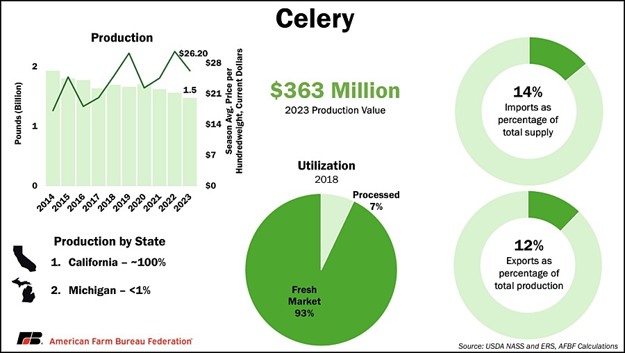Thanksgiving dinner is a special meal cherished by nearly all Americans. Gathering around the table, we give thanks for the abundance of a delicious feast. But, while millions of Americans look forward to their annual Thanksgiving meal, very few know about the amazing diversity of how and where most classic Thanksgiving foods are grown. In this Market Intel, we dive into the facts behind the production of nine Thanksgiving staples that are part of the American Farm Bureau's traditional Thanksgiving Dinner Cost Survey, which has been conducted annually since 1986.
Cranberries
The United States is the world's largest producer of cranberries. Nearly all cranberries produced in the United States are processed into delicious and nutritious products including dried cranberries and cranberry juice. Famously, most cranberries are wet harvested – the beds are flooded, removed from the vine, and then flooded again, during which the fruit floats to the top to be harvested. Fresh market cranberries are harvested in a drier, slower manner by being "combed" from the vines using a mechanized picking machine. Cranberries are a perennial plant, with bush-like vines growing cranberries year after year in bogs.

Cranberries are native to North America and have a long history here, with cranberry sauce even being the suggested pairing with turkey in the first cookbook written by an American: American Cookery, published in 1796. The first commercial cranberry beds in the United States were planted by a Revolutionary War veteran in 1816 in Massachusetts on the Cape Cod peninsula. Today, the top states for cranberry production are Wisconsin (60% of domestic production), Massachusetts (26%), New Jersey (8%) and Oregon (7%).
To give a sense of the geographic diversity involved in producing your meal, we ranked the top three production states for nine Thanksgiving dinner staples: cranberries, celery, sweet potatoes, green beans, pumpkins, green peas, potatoes, carrots, and turkey. A total of 15 different states appeared at least once in these rankings, representing every region of the country. From Massachusetts to California, Wisconsin to Mississippi – farmers across the nation work hard all year to grow the food we gather around and give thanks for on Thanksgiving.
Celery
Today, most domestically produced celery grows nearly year-round on over 20,000 acres on the central and southern coasts of California. The state is so dominant in celery production that USDA's National Agricultural Statistical Service only provides data for California-grown celery. Despite this reporting, growers in Michigan (1,100 acres) also produce celery. Most celery goes into the fresh market, and 86% of the celery supply in the United States is produced domestically.

To view the full report, click here.
 For more information:
For more information:
American Farm Bureau Federation
Tel: +1 (202) 406 3600
Email: media@fb.org
www.fb.org
